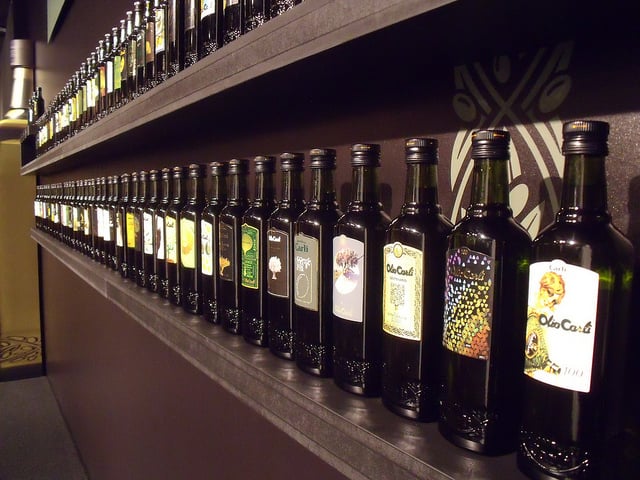Refractive Index List of Common Household Liquids
Gemologists may immerse gems in refraction fluids during examinations. This refractive index list of household liquids offers some common alternatives.
2 Minute Read
Refractive Index List of Common Household Liquids
| Liquid | Refractive Index |
| alcohol, ethyl | 1.36 |
| almond oil | 1.45-1.47 |
| anise oil | 1.54-1.56 |
| Canadian balsam | 1.53-1.55 |
| cassia oil | 1.58-1.60 |
| castor oil | 1.47-1.48 |
| cedar wood oil | 1.51 |
| cinnamon oil | 1.59-1.62 |
| clove oil | 1.53 |
| coconut oil | 1.43-1.46 |
| cod liver oil | 1.46-1.48 |
| corn oil | 1.47-1.48 |
| cottonseed oil | 1.45-1.48 |
| eucalyptus oil | 1.46-1.47 |
| glycerol (glycerin oil) | 1.47 |
| kerosene | 1.45 |
| lanolin | 1.48 |
| lemon oil | 1.47-1.48 |
| linseed oil | 1.47-1.49 |
| mineral oil | 1.47-1.48 |
| neatsfoot oil | 1.47 |
| olive oil | 1.44-1.47 |
| palm oil | 1.44-1.46 |
| peppermint oil | 1.46-1.47 |
| rape seed oil | 1.47-1.48 |
| safflower oil | 1.47-1.48 |
| sandalwood oil | 1.50-1.51 |
| sesame oil | 1.47 |
| soybean oil | 1.47-1.48 |
| tung oil | 1.49-1.52 |
| turpentine | 1.47 |
| water | 1.33 |
| wintergreen oil | 1.54 |
Editor's Note: This list was compiled from information provided by Donald Clark, CSM IMG, Dr. Gerald Wykoff, Dr. Clive Washington, Roy Kersey, and others.
Vegetable Oil Variations
Be aware that vegetable oils have variable properties. Even oils made from the same species of plant vary in chemical composition depending on things like plant varieties, where the plant grew, how much sun it got, etc. Nevertheless, most plant triglyceride oils (castor, corn, olive, soybean, for example) have fairly similar RIs. Tung oil is a little higher, but make sure it's not adulterated. Clove oil is quite a bit higher.
Dr. Clive Washington
Refractol
Maybe it's not quite a household liquid, but I use a product called Refractol. It's clear, odorless, nontoxic, and has a listed RI of 1.567. If you buy it online, double check the listed RI. Some product has an RI of 1.52 to make it transparent to glass microscopic slides.
Keep in mind that oils do have variations in RI, and some household liquids, like turpentine, can be noxious.
Donald Clark, CSM IMG
(Editor's note: Refractol may no longer be available).
Nail Polish Dryer
For looking into a stone under a microscope to find inclusions, I use a product called Sally Hansen Dry Kwik. It's, of all things, nail polish dryer. In my opinion, it works better than Refractol.
Harold
Cinnamon Oil Pros and Cons
I myself use cinnamon oil. It has a pleasant, if strong, smell. Some warnings: it may eventually eat through the seal of its jar and might produce red welts on you if you get it on your face. (It did to me). Also, if you're examining rough, some gem dealers may not like you giving them back scented stones. The dealers with whom I've done previous business have had no objections to my immersing their rough. Ask first.
Scentless Refractol may be better for some, but cinnamon oil is almost exactly the same RI as tourmaline and topaz. It would be quite good with spinel and corundum, too. Cinnamon oil does have a yellow color, so those who want absolutely clear fluid will have to look for something else.
Roy Kersey
International Gem Society
Related Articles
What are the Best Rough Sapphire Stones?
Gem Cutting Acronyms and Their Meanings
Does Refractive Index Affect Gemstone Brightness?
Tips for Polishing Synthetic Corundum
Latest Articles
800 Years of Mogok: A Celebration in Tenuous Times
What is the Average Gemstone Faceting Yield?
Pyroxmangite Value, Price, and Jewelry Information
How to Identify Emerald Simulants and Synthetics
Never Stop Learning
When you join the IGS community, you get trusted diamond & gemstone information when you need it.
Get Gemology Insights
Get started with the International Gem Society’s free guide to gemstone identification. Join our weekly newsletter & get a free copy of the Gem ID Checklist!
